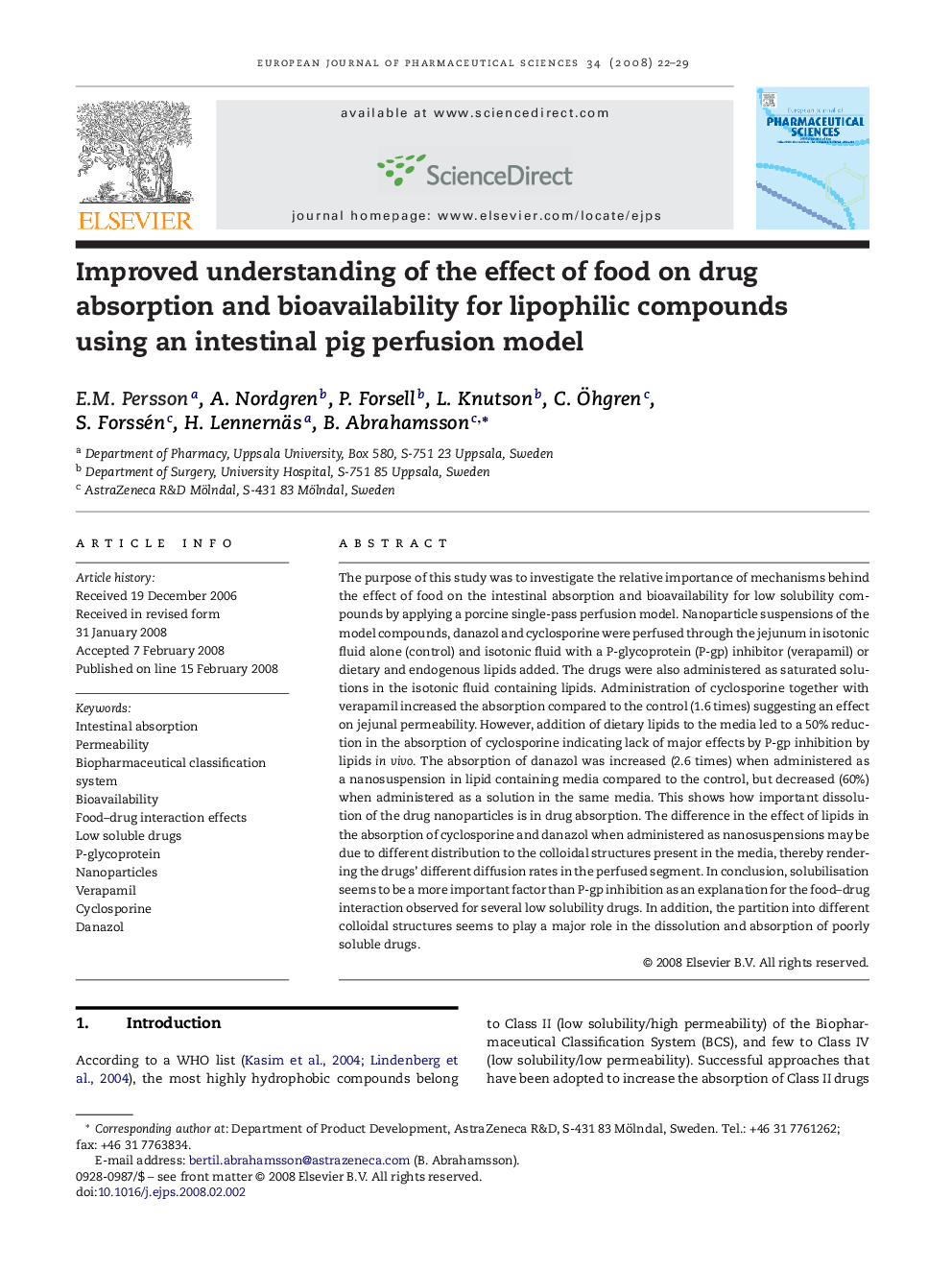| Article ID | Journal | Published Year | Pages | File Type |
|---|---|---|---|---|
| 2482479 | European Journal of Pharmaceutical Sciences | 2008 | 8 Pages |
The purpose of this study was to investigate the relative importance of mechanisms behind the effect of food on the intestinal absorption and bioavailability for low solubility compounds by applying a porcine single-pass perfusion model. Nanoparticle suspensions of the model compounds, danazol and cyclosporine were perfused through the jejunum in isotonic fluid alone (control) and isotonic fluid with a P-glycoprotein (P-gp) inhibitor (verapamil) or dietary and endogenous lipids added. The drugs were also administered as saturated solutions in the isotonic fluid containing lipids. Administration of cyclosporine together with verapamil increased the absorption compared to the control (1.6 times) suggesting an effect on jejunal permeability. However, addition of dietary lipids to the media led to a 50% reduction in the absorption of cyclosporine indicating lack of major effects by P-gp inhibition by lipids in vivo. The absorption of danazol was increased (2.6 times) when administered as a nanosuspension in lipid containing media compared to the control, but decreased (60%) when administered as a solution in the same media. This shows how important dissolution of the drug nanoparticles is in drug absorption. The difference in the effect of lipids in the absorption of cyclosporine and danazol when administered as nanosuspensions may be due to different distribution to the colloidal structures present in the media, thereby rendering the drugs’ different diffusion rates in the perfused segment. In conclusion, solubilisation seems to be a more important factor than P-gp inhibition as an explanation for the food–drug interaction observed for several low solubility drugs. In addition, the partition into different colloidal structures seems to play a major role in the dissolution and absorption of poorly soluble drugs.
